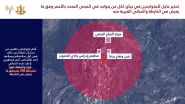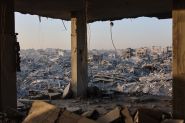
LAF Refutes Hezbollah Infiltration Claim
This is Beirut 04/12 16:20

This is Beirut 04/12 16:20

This is Beirut 04/12 14:35

This is Beirut 04/12 14:00

Natasha Metni Torbey 04/12 12:00

This is Beirut 04/12 11:25

This is Beirut 05/12 22:30

This is Beirut 05/12 21:40

This is Beirut 04/12 21:15

This is Beirut 04/12 19:50

This is Beirut 04/12 19:23
This is Beirut 04/12 14:00
This is Beirut 02/12 14:05
This is Beirut 02/12 13:10
This is Beirut 02/12 11:55

This is Beirut 03/12 15:15

This is Beirut 21/11 12:20

This is Beirut 19/11 15:15

This is Beirut 19/11 09:40

This is Beirut 18/11 12:15

This is Beirut 05/12 19:15

This is Beirut 05/12 15:35

This is Beirut 04/12 18:30

This is Beirut 04/12 16:00

This is Beirut 04/12 14:10

This is Beirut 09:45

Makram Haddad 05/12 10:16

This is Beirut 04/12 14:20

Makram Haddad 04/12 12:00

Makram Haddad 01/12 14:20

Bélinda Ibrahim 04/12 15:05

Bélinda Ibrahim 03/12 13:00

Makram Haddad 03/12 10:30

Bélinda Ibrahim 27/11 10:30

Bélinda Ibrahim 26/11 10:30

par Ici Beyrouth, 11:00

par Ici Beyrouth, 09:45

par Ici Beyrouth, 05/12 22:35

par Ici Beyrouth, 05/12 21:40

par Ici Beyrouth, 05/12 20:25